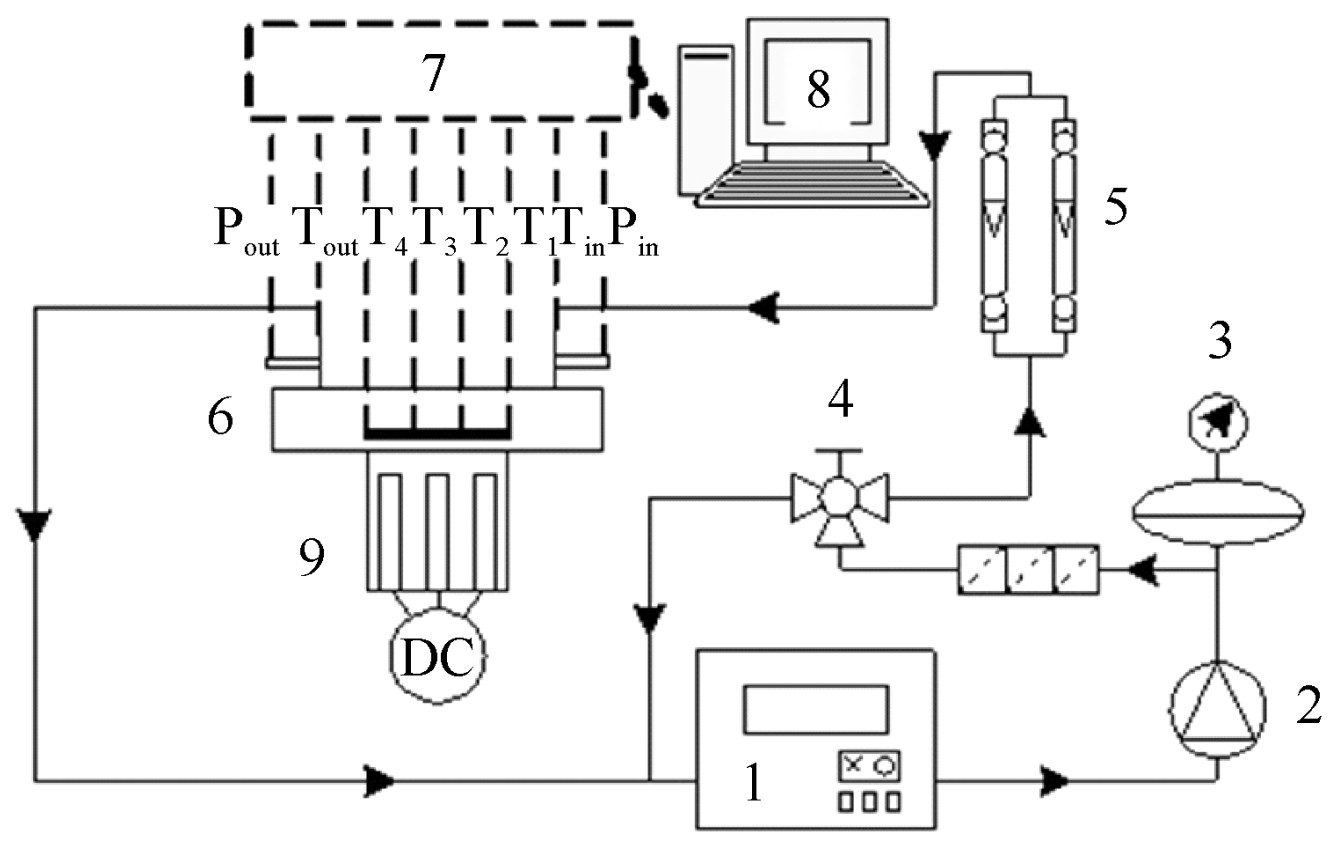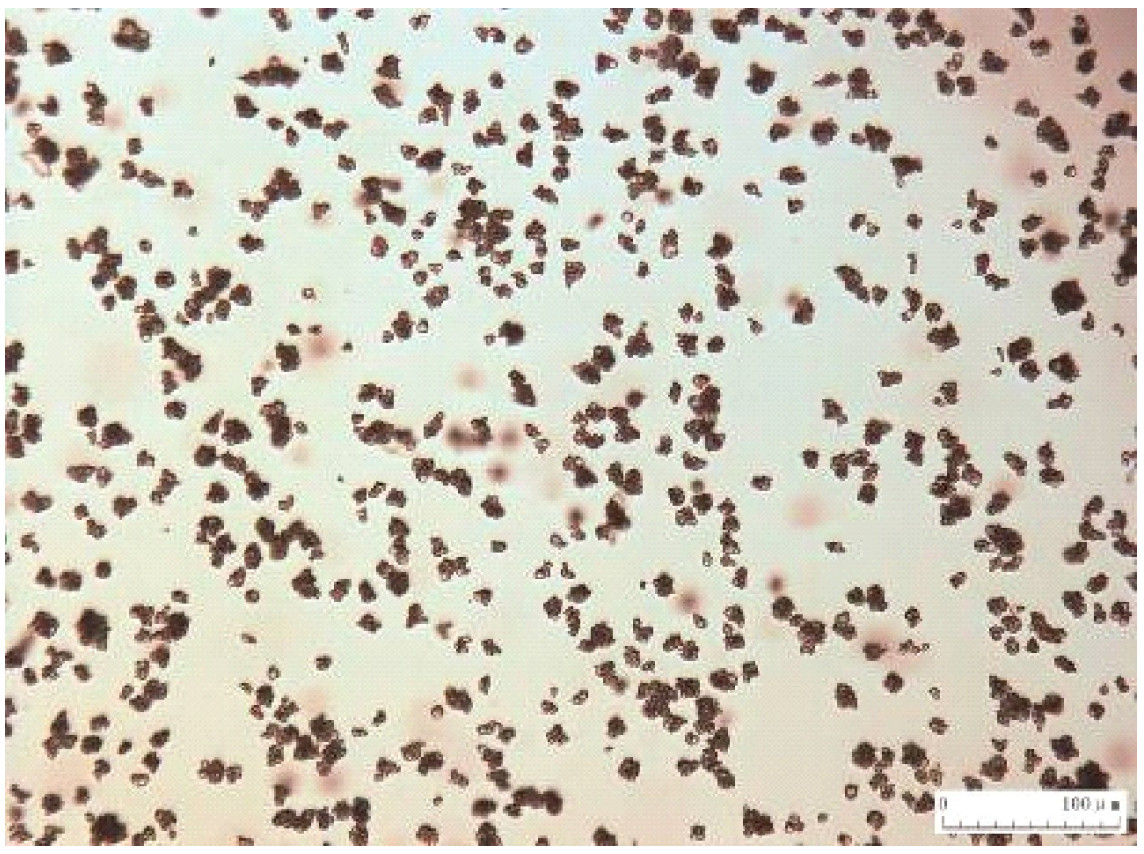Heat transfer characteristics of latent functionally thermal fluid flows in the pin-fin Micro channels
-
摘要: 引入潜热型功能热流体替换现有传统工质冷却大功率激光器,实验研究了潜热型功能热流体与传统工质去离子水在高4 mm、宽2 mm、间距1 mm的微针肋内的层流流动换热特性。结果表明:在雷诺数Re为625~1125范围内,潜热型功能热流体均表现出比水更好的冷却性能及更低的壁面温度,且存在最佳的质量分数值;相同工况下,潜热型功能热流体平均努谢尔数Nu大于去离子水,平均努谢尔数Nu随着雷诺数Re的增加而增加。拟合了平均努谢尔数与流体雷诺数、普朗特数、质量分数的经验的关系式,最大偏差为16.9%,可以较好反映潜热型功能热流体的换热特性;潜热型功能热流体沿着流动长度的方向存在一个稳定的局部换热强化区,且强化换热存在最佳的长度。Abstract: In view of the cooling problem of high power lasers, the existing traditional working fluids are replaced by the latent functionally thermal fluid. The laminar flow and heat transfer characteristics of the latent heat functionally thermal fluid and that of deionized water in a piece of pin-fin micro channels with height of 4 mm, width 2 mm and spacing 1 mm were experimentally studied. The results show that when Reynolds Number ranges 625-1125, the latent functionally thermal fluid shows better cooling performance and lower wall temperature than the deionized water, and it has an optimum concentration value; Its average Nusselt number is greater than that of the deionized water, and the average Nusselt number increases with the Reynolds number. To clearly demonstrate the relationship between the average Nusselt number, Reynolds number, mass concentration and Prandtl number, an experimental formula was further fitted based on the experimental data, the maximum relative deviation is 16.9%, which is acceptable for experiments. Along the length in the direction of flow, there exists an optimal length for a stable local heat transfer enhancement section.
-
表 1 潜热型功能热流体相关热物性参数
Table 1. The parameters of MEPCM
thermal fluid density/(kg·m-3) thermal conductivity/(W·m-1·℃-1) viscosity/(10-3Pa·s) latent heat/(J·g-1) water(40 ℃) 992.2 0.634 0.656 — PCM 1100 0.162 — 100 5% 997 0.606 0.741 — 10% 1002 0.578 0.856 15% 1007 0.551 1.015 — 表 2 实验不确定度
Table 2. Uncertainties of experiment
parameter uncertainty/% parameter uncertaintty/% Q 2.4 Re 8.1 ΔTm 5.8 hm 6.9 kb 5 Num 8.2 ub 5 -
[1] 程勇, 郭延龙, 何志祝, 等. 相变散热技术在小型高效半导体抽运激光器中的应用研究[J]. 中国激光, 2016, 43: 0102005. https://www.cnki.com.cn/Article/CJFDTOTAL-JJZZ201601005.htmCheng Yong, Guo Yanlong, He Zhizhu, et al. Application research of phase change material heat removal technology for compact high efficiency diode pumped laser. Chinese Journal of Lasers, 2016, 43: 0102005 https://www.cnki.com.cn/Article/CJFDTOTAL-JJZZ201601005.htm [2] 刘东, 蒋斌, 陈飞. 微方肋冷却系统的换热特性[J]. 强激光与粒子束, 2013, 25(2): 335-340. doi: 10.3788/HPLPB20132502.0335Liu Dong, Jiang Bin, Chen Fei. Heat transfer characteristics of micro-fin cooling system. High Power Laser and Particle Beams, 2013, 25(2): 335-340 doi: 10.3788/HPLPB20132502.0335 [3] Magorzata J, Ireneusz S. Review on properties of microencapsulated phase change materials slurries (mPCMS)[J]. Applied Thermal Engineering, 2016, 98(98): 365-373. [4] Giro-Paloma J, Martínez M, Cabeza L F, et al. Types, methods, techniques, and applications for microencapsulated phase change materials (MPCM): A review[J]. Renewable & Sustainable Energy Reviews, 2016, 53: 1059-1075. [5] 李晓燕, 李月明, 赵乔乔, 等. 相变微胶囊悬浮液的研究进展[J]. 材料导报, 2015(5): 57-61. https://www.cnki.com.cn/Article/CJFDTOTAL-CLDB201505009.htmLi Xiaoyan, Li Yueming, Zhao Qiaoqiao, et al. Progress in research of phase change microencapsulated suspension. materials review, 2015(5): 57-61 https://www.cnki.com.cn/Article/CJFDTOTAL-CLDB201505009.htm [6] 陈斌娇, 王馨, 曾若浪, 等. 相变微胶囊悬浮液层流强迫对流换热实验研究[J]. 太阳能学报, 2009(8): 1018-1022. doi: 10.3321/j.issn:0254-0096.2009.08.003Chen Binjiao, Wang Xin, Zeng Ruolang, et al. Experimantal research on laminar forced convection heat transfer characteristics of microencapsulated phase change material suspension. Acta Energiae Solaris Sinica, 2009(8): 1018-1022 doi: 10.3321/j.issn:0254-0096.2009.08.003 [7] 饶宇, F, Stephan P, 等. 相变材料微胶囊悬浮液在矩形小通道内层流流动传热的实验[J]. 航空动力学报, 2006(6): 1012-1020. https://www.cnki.com.cn/Article/CJFDTOTAL-HKDI200606010.htmRao Yu, Dammel F, Stephan P, et al. Experimental study of laminar flow heat transfer with microencapsulated phase change material suspensions in rectangular mini-channels. Journal of Aerospace Power, 2006(6): 1012-1020 https://www.cnki.com.cn/Article/CJFDTOTAL-HKDI200606010.htm [8] Liu C, Ma Z, Wang J, et al. Experimental research on flow and heat transfer characteristics of latent functional thermal fluid with microencapsulated phase change materials[J]. International Journal of Heat and Mass Transfer, 2017, 115: 737-742. [9] Wang Y, Chen Z, Ling X. An experimental study of the latent functionally thermal fluid with micro-encapsulated phase change material particles flowing in microchannels[J]. Applied Thermal Engineering, 2016, 105: 209-216. [10] 刘东, 何蔚然, 钟小龙, 等. 潜热型功能热流体在微小管道内的换热特性[J]. 化工进展, 2016, 35(10): 3042-3048. https://www.cnki.com.cn/Article/CJFDTOTAL-HGJZ201610005.htmLiu Dong, He Weiran, Zhong Xiaolong, et al. The heat transfer characteristics of latent functionally thermal fluid in micro tube. Chemical Industry and Engineering Progress, 2016, 35(10): 3042-3048 https://www.cnki.com.cn/Article/CJFDTOTAL-HGJZ201610005.htm [11] Lenert A, Nam Y, Yilbas B S, et al. Focusing of phase change microparticles for local heat transfer enhancement in laminar flows[J]. International Journal of Heat and Mass Transfe, 2013, 56(1): 380-389. [12] 刘东, 蒋斌, 刘明侯. 进出口方式对槽道流体分配和换热的影响[J]. 中国激光, 2012, 39: 1003005. https://www.cnki.com.cn/Article/CJFDTOTAL-JJZZ201210010.htmLiu Dong, Jiang Bin, Liu Minghou. Inlet/outlet arrangement effect on the flow distribution and heat transfer in mini-channels. Chinese Journal of Lasers, 2012, 39: 1003005 https://www.cnki.com.cn/Article/CJFDTOTAL-JJZZ201210010.htm -






 下载:
下载:









